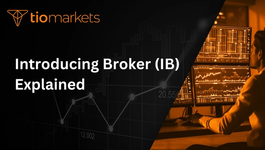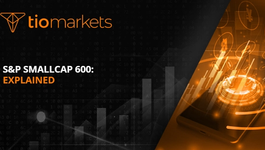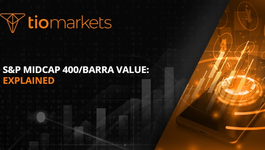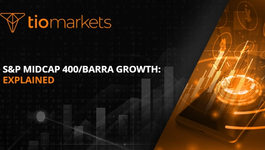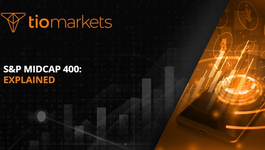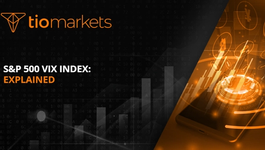Return on tangible equity: Explained
BY TIOmarkets
|August 15, 2024In the world of trading and finance, there are numerous metrics and indicators that investors and traders use to evaluate the performance and potential of a business. One such metric is the Return on Tangible Equity (ROTE). This article will delve into the depths of ROTE, exploring its definition, calculation, importance, and how it can be used in trading.
Understanding ROTE is crucial for anyone involved in trading or investing. It provides a clear picture of a company's financial health and profitability, excluding intangible assets. This in-depth guide will help you grasp the concept of ROTE and its implications in the trading world.
Understanding Return on Tangible Equity (ROTE)
Before we delve into the intricacies of ROTE, it's essential to understand what it means. Return on Tangible Equity is a financial metric that measures a company's financial performance by comparing its net income to its shareholders' equity, excluding any intangible assets. These intangible assets can include things like patents, copyrights, and goodwill.
ROTE is a variant of the more commonly known Return on Equity (ROE), but it provides a more conservative view of a company's profitability. By excluding intangible assets, ROTE gives a clearer picture of how effectively a company is using its physical assets to generate profits.
Calculation of ROTE
The calculation of ROTE is relatively straightforward. It involves subtracting a company's intangible assets and the associated deferred tax liability from shareholders' equity. The resulting figure is then divided by the company's net income. The formula for ROTE is as follows:
ROTE = Net Income / (Shareholders' Equity - Intangible Assets - Deferred Tax Liability)
This calculation provides a ratio, often expressed as a percentage, that indicates the return a company is generating on its tangible equity.
Interpreting ROTE
Interpreting ROTE is a critical aspect of using this metric effectively in trading. A high ROTE value generally indicates that a company is efficiently using its tangible assets to generate profits. Conversely, a low ROTE may suggest that a company is not effectively utilizing its tangible assets, which could be a red flag for investors and traders.
However, it's important to note that ROTE should not be used in isolation. It should be used in conjunction with other financial metrics to get a comprehensive view of a company's financial performance.
Importance of ROTE in Trading
ROTE plays a crucial role in trading and investment decisions. It provides traders with a more accurate picture of a company's profitability by focusing on tangible assets. This focus on tangible assets makes ROTE particularly useful for companies with significant intangible assets, such as technology or pharmaceutical companies.
By providing a clear picture of a company's ability to generate profits from its tangible assets, ROTE can help traders make informed decisions about whether to buy or sell a company's shares. A high ROTE might indicate a potentially profitable investment, while a low ROTE could suggest that a company is not a good investment.
ROTE and Company Valuation
ROTE is an important tool in company valuation. By providing a measure of a company's profitability that excludes intangible assets, ROTE can give a more accurate picture of a company's intrinsic value. This can be particularly useful when comparing companies in the same industry.
For example, a technology company might have a high ROE due to its significant intangible assets, such as patents. However, its ROTE might be much lower, indicating that it is not as profitable when it comes to its tangible assets. This could suggest that the company is overvalued, which would be a crucial insight for traders.
ROTE and Risk Assessment
ROTE can also be a valuable tool in assessing the risk associated with a particular investment. A company with a low ROTE might be seen as a riskier investment, as it indicates that the company is not effectively using its tangible assets to generate profits.
On the other hand, a high ROTE might suggest that a company is a less risky investment, as it shows that the company is effectively using its tangible assets to generate profits. However, as with all financial metrics, ROTE should be used in conjunction with other indicators to get a comprehensive view of a company's risk profile.
Limitations of ROTE
While ROTE is a valuable tool in trading, it's important to be aware of its limitations. One of the main limitations of ROTE is that it excludes intangible assets, which can be a significant source of value for some companies. For example, a technology company's value might be largely tied up in its patents, which would not be reflected in its ROTE.
Another limitation of ROTE is that it can be influenced by a company's financial structure. For example, a company with a high level of debt might have a lower ROTE, even if it is profitable. This is because the debt reduces the company's shareholders' equity, which is the denominator in the ROTE calculation.
ROTE and Intangible Assets
As mentioned earlier, one of the main limitations of ROTE is that it excludes intangible assets. While this can provide a more conservative view of a company's profitability, it can also distort the picture for companies whose value is largely tied up in intangible assets.
For example, a technology company might have a high ROE due to its significant intangible assets, such as patents. However, its ROTE might be much lower, indicating that it is not as profitable when it comes to its tangible assets. This could suggest that the company is overvalued, which would be a crucial insight for traders.
ROTE and Financial Structure
Another limitation of ROTE is that it can be influenced by a company's financial structure. A company with a high level of debt might have a lower ROTE, even if it is profitable. This is because the debt reduces the company's shareholders' equity, which is the denominator in the ROTE calculation.
This means that ROTE can be less useful for comparing companies with different financial structures. For example, a company with a high level of debt might appear less profitable than a company with a low level of debt, even if the two companies are equally profitable on an operational level.
Conclusion
Return on Tangible Equity (ROTE) is a valuable tool for traders and investors. It provides a measure of a company's profitability that excludes intangible assets, giving a clearer picture of a company's ability to generate profits from its tangible assets.
However, like all financial metrics, ROTE has its limitations and should be used in conjunction with other indicators to get a comprehensive view of a company's financial performance. By understanding what ROTE is, how it's calculated, and how it can be used in trading, you can make more informed trading decisions.
Start Trading with TIOmarkets
Now that you understand the importance of Return on Tangible Equity in assessing a company's financial health, it's time to put that knowledge into action. Join TIOmarkets, a top rated forex broker, and start trading over 300 instruments across 5 markets, including Forex, indices, stocks, commodities, and futures. Benefit from low fees and enhance your trading skills with our comprehensive educational resources. With over 170,000 accounts opened in more than 170 countries, TIOmarkets is the platform of choice for savvy traders. Ready to take the next step? Create a Trading Account today and embark on your trading journey with confidence.
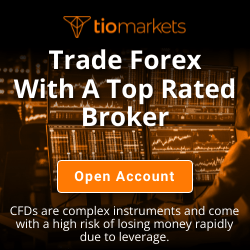
Risk disclaimer: CFDs are complex instruments and come with a high risk of losing money rapidly due to leverage. You should consider whether you understand how CFDs work and whether you can afford to take the high risk of losing your money. Never deposit more than you are prepared to lose. Professional client’s losses can exceed their deposit. Please see our risk warning policy and seek independent professional advice if you do not fully understand. This information is not directed or intended for distribution to or use by residents of certain countries/jurisdictions including, but not limited to, USA & OFAC. The Company holds the right to alter the aforementioned list of countries at its own discretion.
Join us on social media

Behind every blog post lies the combined experience of the people working at TIOmarkets. We are a team of dedicated industry professionals and financial markets enthusiasts committed to providing you with trading education and financial markets commentary. Our goal is to help empower you with the knowledge you need to trade in the markets effectively.
